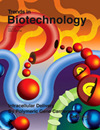投稿信息
稿件收录要求
Trends in Biotechnology is a monthly journal that publishes innovative applications of biology as useful technologies. Our articles should describe biobased solutions to important problems and should emphasize how to engineer or adapt living systems for societal benefit. Specific application areas include human health and well-being, renewable energy, food and agriculture, natural resources, and production of bulk and fine chemicals.
A Trends in Biotechnology article should not merely summarize lab-scale research; it should think carefully about implementation, scale-up, and “real world” implications. A key consideration is how to translate or commercialize experimental applied biology to products, industrial platforms, therapies, or devices.
Scientific areas of interest include but are not limited to the following:
- Synthetic biology
- Genome editing
- Tissue engineering and biofabrication
- Metabolic engineering
- Cellular and microbial engineering
- Plant trait improvement and agricultural engineering
- Biomanufacturing
- Biosensors and bioelectronics
- Biofuels, bioenergy, microbial fuel cells
- Cellular agriculture and alternative nutrients/proteins
Trends in Biotechnology publishes review articles, opinions, research articles, and reports (or short research articles) on these topics. We also welcome shorter commentary articles on law and intellectual property, policy and regulation, bioethics, scientific communication, and the economics of biotechnology. Additionally, we consider resource articles describing novel approaches for developing biobased technologies.
Trends in Biotechnology has a diverse audience that reflects its intentionally broad scope. Our readers include biologists, engineers, chemists, pharmacologists, computer scientists, and physicians, and they work in academic, clinical, industrial, NGO, and governmental settings. Therefore, we emphasize accessible articles that are easy to read, and we encourage authors to keep in mind that many readers may not be familiar with their field's specific terminology.




